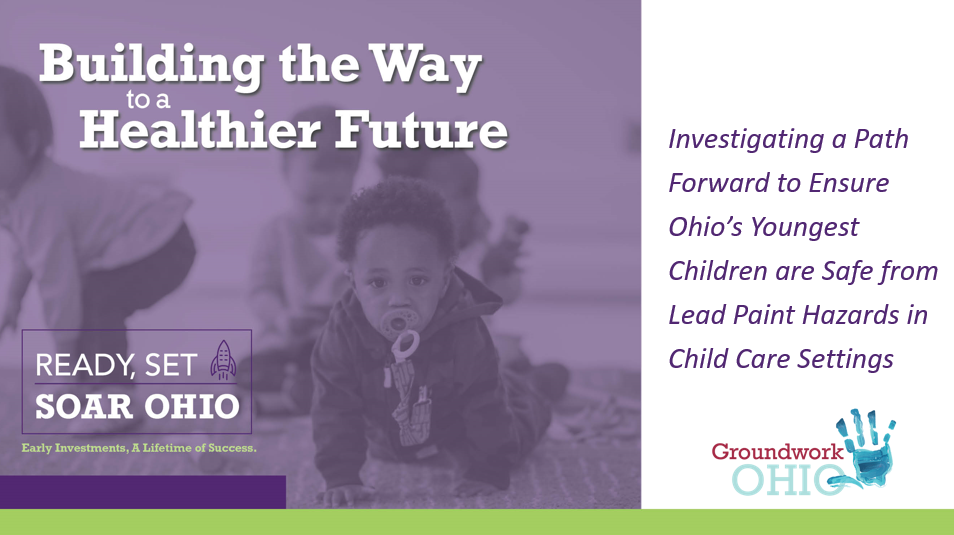Building the Way to a Healthier Future Report Release
- Groundwork Ohio
- Oct 13, 2020
- 2 min read
Many of Ohio’s young children are being threatened by a seemingly invisible villain: lead paint. Despite being federally banned in 1978, lead paint continues to live in the homes of families and businesses. In fact, 42% of Ohio’s housing stock was built before lead paint was banned in 1978. This means that, unless home or business owners invested in expensive lead abatement or practice continuous lead safe strategies, many of Ohio’s homes likely still contain elevated levels of lead. Lead paint is detrimental to everyone’s health, but this is especially true for young children due to the rapid brain development that occurs in the first few years of life.
Today, we released a comprehensive report titled “Building the Way to a Healthier Future: Investigating a Path Forward to Ensure Ohio’s Youngest Children are Safe from Lead Paint Hazards in Child Care Settings.” This report is a result of the research Ready, Set, Soar Ohio and Groundwork Ohio conducted over the past 10 months around why Ohio should consider including child care programs in the state’s child lead poisoning primary prevention strategies. Over the years, the state has focused its efforts on making the homes with young children lead-safe or lead-free to create better health outcomes. However, what is not widely talked about how child care programs can be instrumental in preventing lead poisoning in children as this is where children spend most of their days and child care programs serve as one of the first places families go for information.
Within this new groundbreaking report, we dive into the prevalence and impact of child lead poisoning in Ohio and the state’s current policies and programs addressing lead poisoning prevention. Additionally, we created and analyzed the first ever 50 state scan of existing child care regulations on lead paint in all 50 states. We also interviewed child care programs, state and local agencies, philanthropic organizations, non-profits, advocates, lead abatement contractors, businesses, and more throughout the creation of this report to gain their insight, feedback, and expertise on how we can prevent young children in becoming lead poisoned. To summarize our findings, we then provided tangible policy recommendations.
It is important to note that report’s policy recommendations cannot occur without the voice of child care providers at the table and any solution must include public investment. Before the COVID-19 pandemic, child care providers were already operating on razor thin margins with very little room to make improvements to their facilities. With the pandemic resulting in increased costs and decreased revenue for most child care programs, what little room they had is now gone. Child care programs cannot make any meaningful change in this space without outside funding.
We are grateful to the Lead Safe Cleveland Coalition for making this work possible.







Comments